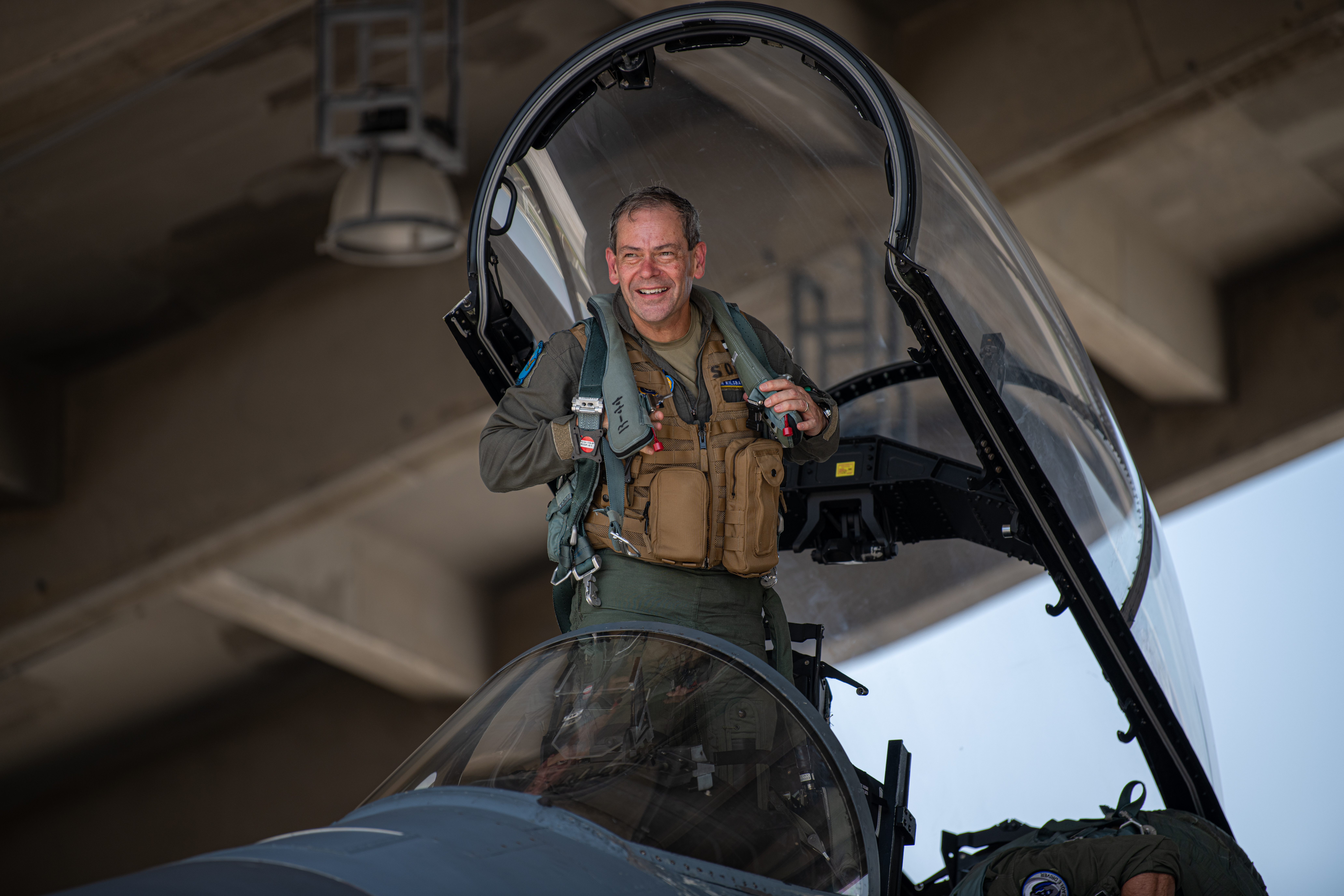The threats facing the United States today are the greatest since World War II. China is pressing hard in the Pacific, Russia continues its invasion of Ukraine, Iran, and North Korea remain fixated on their nuclear aspirations. Worse, all four are closely aligned. Our homeland is increasingly under threat with the proliferation of strike capabilities.
While the U.S. has confronted threats before, never has it had to deal with so many concurrently. This much is certain: First, U.S. Air Force airpower is vital to deter adversaries and secure victory in conflict; and second, the U.S. Air Force is too small, too old, and too lacking in combat readiness to meet the nation’s security requirements. The Air Force needs decisive, insightful leadership not only to acknowledge these challenges but to solve them. One name stands at the top of that select list: Gen. Ken “Cruiser” Wilsbach.
A Fighter and a Commander
Gen. Wilsbach is a thoroughbred fighter pilot with nine tours in the Indo-Pacific—the central theater in the 21st century. Few—if any—leaders can match his operational knowledge of China, North Korea, and the dynamics of the Pacific region.
As commander of Pacific Air Forces (PACAF), from 2020 to 2024, Wilsbach led America’s front-line air component through an unprecedented period of Chinese military expansion. In response, he strengthened ties with Japan, South Korea, and Australia, and prepared his forces by championing innovative concepts such as Agile Combat Employment.
Since 2024, when he took over at Air Combat Command, he brought that same warfighting attitude and focused on four priorities: readiness, modernization, agile combat employment, and taking care of Airmen and families. Notably absent from his command philosophy was any diversion into social ideology. His compass was—and remains—laser-focused on sharpening the Air Force’s combat edge.
Recent criticism of Gen. Wilsbach centers on old remarks he made on diversity, equity, and inclusion (DEI). The situation is straight-forward. Wilsbach’s comments reflected the national conversation that occurred in the wake of the George Floyd killing as well as follow-on DEI policy guidance and direction issued by the Department of Defense (DOD) leadership and then-President Biden.
However, what is more important were his actions. He was focused on lethality and warfighting ethos, not DEI –which was being pushed from above. He was the first four-star commander in recent times that called for a return to basic, time-tested norms—calling for routine standards and readiness reviews critical to war fighting while emphasizing the Air Force’s core values: integrity, excellence, and service. He consistently championed standards-based performance metrics, where every Airman earns advancement based on talent, performance, and achievement—not on subjective demographic criteria. Wilsbach executed along his performance vectors because he knew they promoted the virtues and values Airmen would need to succeed and survive in combat. He received pushback from those above him and the ranks below. Regardless, Wilsbach held the line.
A related example of his moral courage is when he stood up for retaining fifth-generation F-22s when top Air Force leaders sought to cut them to meet budget constraints. His focus was on warfighting. Standing up for mission capability and lethality when others were ready to sacrifice it to balance the books demonstrated not only a focus on lethality but true moral courage. This is exactly the kind of character and warfighting ethos America expects from its military leaders.
Trusted Leadership
Wilsbach is trusted at every level. Secretary of the Air Force Troy Meink, Undersecretary Matthew Lohmeier, and Chairman of the Joint Chiefs of Staff Gen. Dan Caine have all voiced strong support for his nomination. They recognize in him a leader perfectly aligned with necessary priorities: restoring the Air Force’s warfighting edge, reversing its decline in readiness, capacity and capability, and ensuring American air dominance is never surrendered.
Outside of Washington, allies across the Pacific have long seen him as one of America’s most credible and consistent commanders able to inspire confidence among partners.
The Air Force at a Crossroads
The U.S. Air Force today is stressed. It has less than half as many fighter and bomber squadrons today as 34 years ago when the U.S. last fought a major war; air mobility, tanker, and command and control aircraft are stretched too thin, and intelligence, surveillance, and reconnaissance aircraft are likewise highly taxed. Aging fighter and bomber aircraft demand more maintenance to keep them ready. It is suffering a perennial pilot shortage, and those pilots that it does have are not flying enough. The result is that readiness—the ability to successfully perform a mission if needed—has never been lower. Decades of DOD underinvestment in the Air Force have left the service struggling to maintain its edge.
Americans were rightfully impressed with the results of Operation Midnight Hammer’s strikes on Iranian nuclear sites, but the reality is that mission could only be executed as a one-off. If needed again the next day, the Air Force would not have been able to conduct a similar restrike. America needs its Air Force to deliver campaign-level capacity, capability, and readiness to deter current threats. And the Air Force needs a leader who understands combat power, knows how to deter and defeat great-power rivals, and has the courage to push for the resources and reforms necessary to return the Air Force to fighting form.
Leadership at the top is about putting the mission first, inspiring the force, and ensuring the nation’s security. Gen. Ken Wilsbach is just that kind of leader. He has proven himself as a fighter pilot, strategist, and commander. He has the integrity to speak truth to power, the vision to modernize, and the experience to deter America’s toughest adversaries.
Ron Fogleman is a retired general and former Chief of Staff of the Air Force. Dave Deptula is a retired Air Force lieutenant general and currently Dean of the Mitchell Institute for Aerospace Studies.


